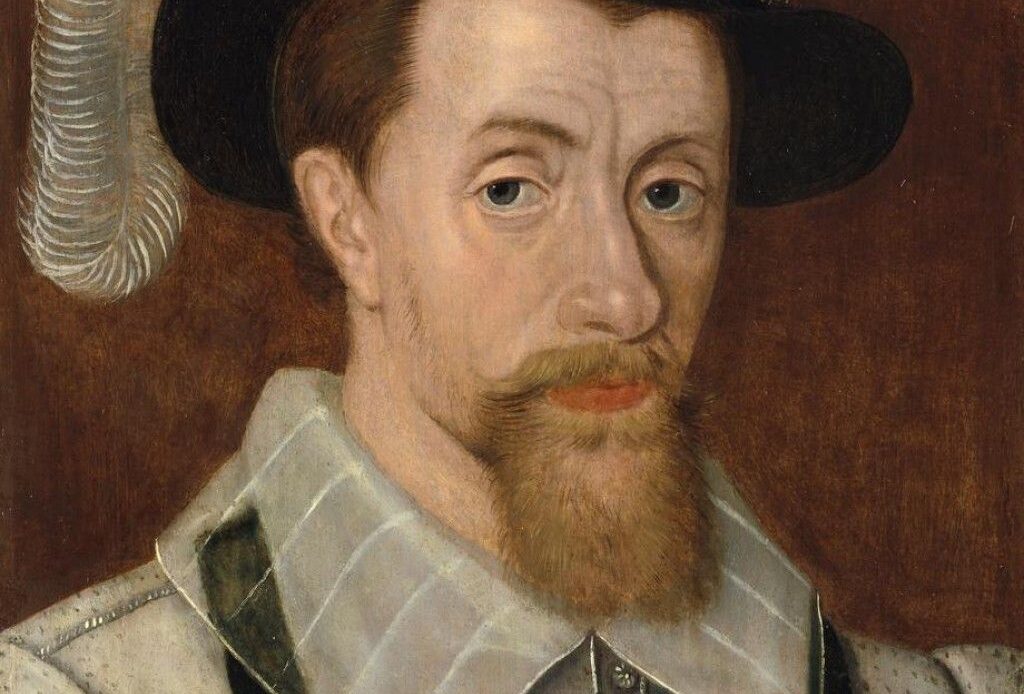
James VI and I was crowned at just 13 months old and is best known for uniting the crowns of England and Scotland, as well as authorising the King James Bible.
The only child of Mary, Queen of Scots, James was born on 19 June 1566 in Edinburgh Castle. The young James’s father, Lord Darnley, was murdered in February 1567 and that spring, Mary was imprisoned and later forced to abdicate in favour of her son. James was less than a year old the last time he saw his mother.
In July 1567, he was crowned King James VI of Scotland in the Church of the Holy Rude, just down the road from Stirling Castle.
A series of regents ruled in place of the baby king, causing no small amount of turmoil as battles were fought between supporters of James and his mother for control of the throne. The first of these regents, James Stewart, 1st Earl of Moray, was assassinated in 1570 in an attempt to put Mary back on the Scottish throne, and the King’s two subsequent regents also died.
James Douglas, 4th Earl of Morton, served as the last, longest-running, and most successful regent for James, having been able to suppress the rebels who wanted to reinstate Mary on the throne. However, he was eventually charged to have taken part in the murder of James’s father, Lord Darnley. Douglas was executed in June 1581, and James VI took control of the throne at age 15.
Aside from his regents, James’s life was strongly shaped by his tutor, George Buchanan, who was a leading scholar and historian. Buchanan’s influence meant the King carried a lifelong love of poetry and literature and filled the Scottish court with the leading poets of the day. James was known as an extremely learned man, interested in theology, writing, and politics, and he published several of his own works. He also is said to have sponsored the translation of the Bible to English, which is still used today and known as the King James Bible.
Inheriting the throne of England was James’s greatest dream, and thus, when his cousin, Queen Elizabeth I signed Mary, Queen of Scots’ death warrant, James did not put up much of a fight. Not only had he distanced himself from his mother, but he wanted Elizabeth to choose him as her heir, given that she had no children and he was her closest royal relative, as well as the most suitable candidate (especially being a Protestant, unlike his Catholic mother). James could claim the English throne through his great grandmother Margaret Tudor, who was a sister of Henry VIII.
In 1589, James married Anne of Denmark, and they had three sons and four daughters, although only three of their children lived past childhood. Henry, their eldest son, died at the age of 18 from typhoid, making their second son, Charles the heir to the English throne. Their only surviving daughter, Elizabeth, eventually became Queen of Bohemia.
When Elizabeth I died on 24 March 1603 James achieved his dream, and he inherited the throne of England, becoming known as James I of England in addition to James VI of Scotland. Even though he was the ruler of both kingdoms, James immediately left Scotland and returned only once, much preferring the English court.
James was a massive proponent of the theatre and adopted William Shakespeare’s company, helping bring a new age of theatrical excellence to the country. He also has been credited with the revival of Scottish poetry, although this renaissance suffered when he brought the country’s preeminent poets with him to the English court.
On the flip side, James was a heavy drinker, an extravagant spender, and often took part in leisure activities in favour of working. He also maintained several male favourites at court, raising rumours of sexual relationships with them.
Politically, he hoped to unite the two countries fully he ruled over and call it Great Britain, but the English Parliament would not agree to the idea. Scotland and England remained separated countries with a shared monarch. While he created peace in England by ending their long war with Spain, his frequent clashes with Parliament left Jame’s son Charles with a political environment that would later mean disaster for his rule.
James escaped with his life during the famous Gunpowder Plot of 1606. The conspirators wanted greater religious tolerance for Catholics and planned to kill the King and members of Parliament by blowing up the building, then re-establishing Catholic rule. The plot was foiled, and to this day on 5 November, Bonfire Night, or Guy Fawkes Day, is celebrated with fireworks to commemorate the event.
James VI and I died on 27 March 1625 at the age of 58 after suffering a stroke and a case of dysentery following a malarial fever. Although one of his favourites, George Villiers, the Duke of Buckingham, was widely accused of poisoning the King in the days prior to his death, no clear evidence was ever found. James is buried at Westminster Abbey and was succeeded by his son, Charles I.

